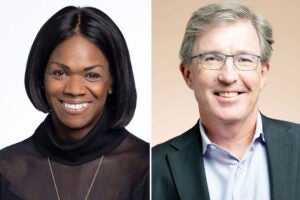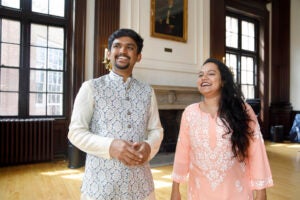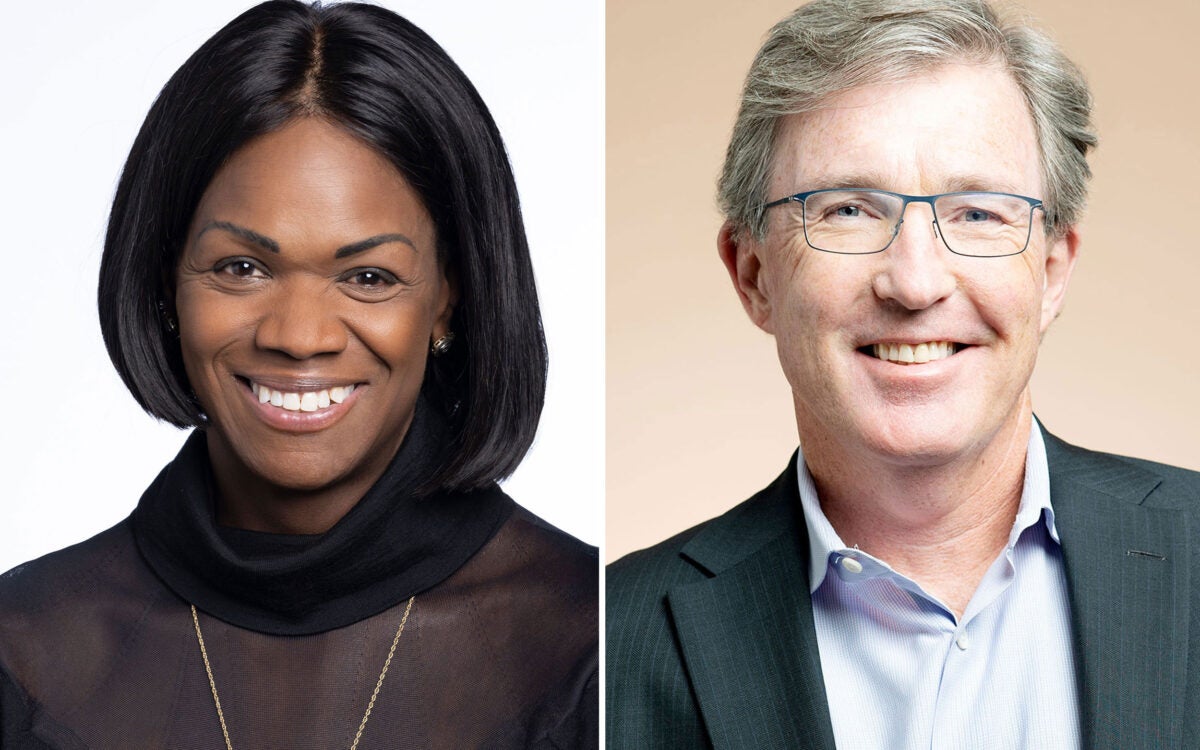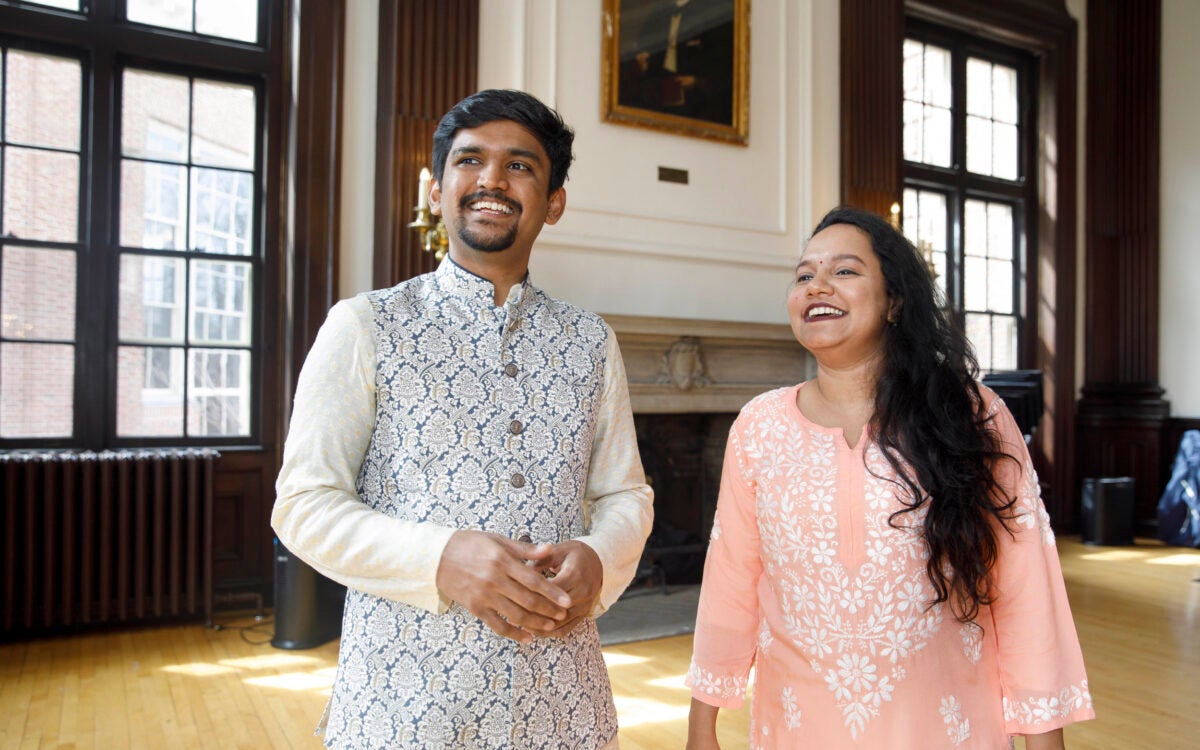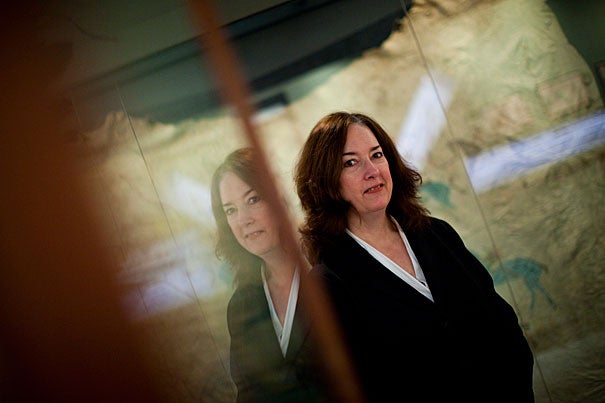
“’Horse’ wasn’t my first word,” said Castle McLaughlin, the associate curator of North American ethnography at Harvard’s Peabody Museum of Archaeology and Ethnology. “But it should have been.” McLaughin co-curated the Peabody exhibit “Wiyohpiyata: Lakota Images of the Contested West,” which prominently features Nokota horses, a breed she is helping to preserve.
Stephanie Mitchell/Harvard Staff Photographer
They save horses, don’t they?
Harvard curator volunteers to save an endangered breed
Castle McLaughlin came face to face with her future in the summer of 1986, staring into the eyes of a wild, blue roan stallion.
She had parents who were equestrians, a grandfather who was a well-known polo player, and a pony from age 5, and she grew up with a profound love for the animals.
“‘Horse’ wasn’t my first word,” said the associate curator of North American ethnography at Harvard’s Peabody Museum of Archaeology and Ethnology. “But it should have been.”
Yet this “mature, dominant stallion that had never been touched” was far from tame, and it was suddenly hers. Moved by its fierce struggle during a roundup at the North Dakota national park where she was working for the summer, McLaughlin purchased it at auction. She planned to tranquilize the rare stallion, get him into a trailer, drive him to the edge of the park, and return him to the wild.
“I was just standing there looking at him, wondering how I was really going to do this.”
Fortunately, two brothers, Frank and Leo Kuntz, were there to save similar horses from slaughter. They offered to help and took the stallion home to their ranch, where it lived for a decade. The serendipitous meeting was the beginning of a long collaboration. The three made a commitment to keep the unusual breed alive and eventually helped to create the Nokota Horse Conservancy, a nonprofit group dedicated to preserving the Nokotas, the name ultimately given the breed.
“We’ve come such a long way, but we are still struggling every day to keep the horses alive and keep them going,” said McLaughlin of her nonprofit work, which has involved creating a breed registry for the animals and promoting them for diverse equestrian disciplines.
The conservancy maintains a small breeding herd of about 120 animals that live and breed on their own for six months of the year in large pastures; in winter they are brought to a ranch to feed. A few offspring are sold each year, typically to other preservation breeders. In addition, the Kuntz brothers also keep small private herds.
Little could McLaughlin know that her love of animals and of art and artifacts would ultimately merge in her work at Harvard.
Commissioned by the National Park Service to research the breed over three years, McLaughlin established that the horses had direct connections to animals ridden by some Native American Sioux, including the Hunkpapa chiefs in the Battle of Little Big Horn. She used her knowledge of the horses to inform the current show at the Peabody Museum.
McLaughlin is co-curator of its ongoing exhibition on “Wiyohpiyata: Lakota Images of the Contested West,” which prominently features Nokotas.
The show revolves around a small “artists book” containing 77 pictures created during the 1860s and ’70s by a group of Native American warrior artists, recovered by the U.S. Army after the 1876 Battle of Little Big Horn, in which American Gen. George Armstrong Custer was defeated and killed. Many of the drawings capture the Native American warriors astride their horses, the unique Nokota breed.
McLaughlin is writing a book about the ledger that is the centerpiece of the Wiyohpiyata exhibit. A graphic artist, photographer, and videographer — skills developed during her time in art school — she collects and draws with vintage fountain pens.
McLaughlin said of her work with the exhibition, which will be on view through next August, “It’s amazing that these Lakota horses have survived and that we’ve been able to install video footage of them in the gallery to animate the drawings of their war pony ancestors done by warriors more than 100 years ago.”
“As an anthropologist interested in human relationships with animals, the opportunity to research and participate in their ongoing history has been fascinating. The great challenge now is to ensure that they have a future, and my hope is that museum visitors will appreciate their value and want to help make that happen.”

